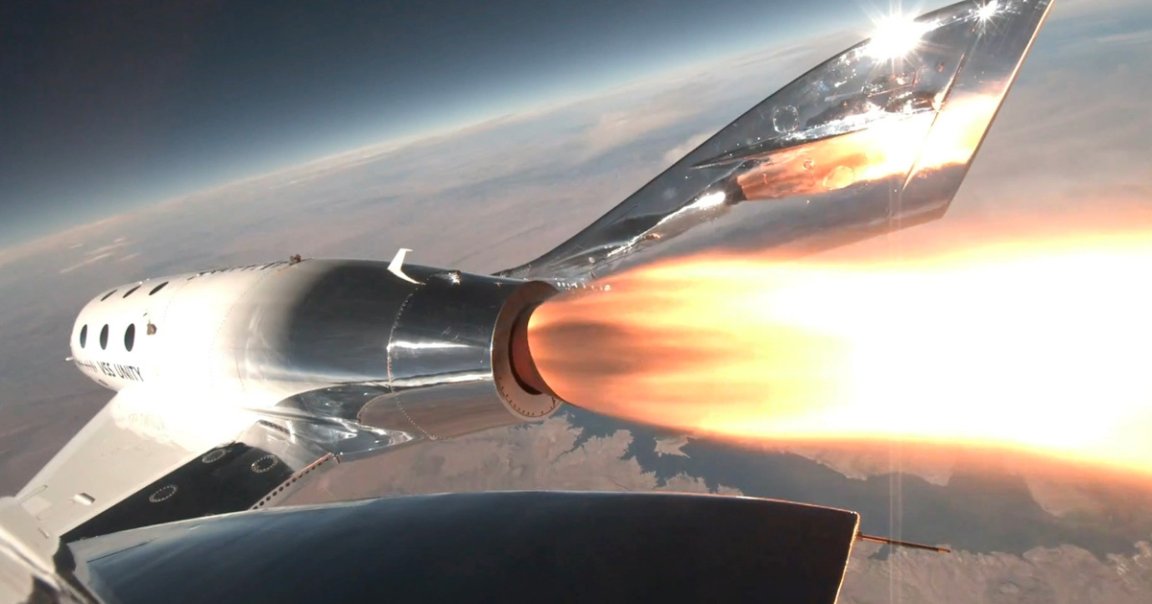
Archaeologists were affronted to discover that billionaire Richard Branson had sent ancient hominin bones up on a commercial space flight, with some suggesting that the stunt reeks of colonialism.
As Nature notes, the remains weren’t even launched for terribly long as they soared aboard the Unity spacecraft, operated by Branson’s Virgin Galactic, just above Earth before returning groundward. But the trip, which featured six living humans and the bones of two human ancestors, has nonetheless drawn intense criticism from the paleontology community.
“To treat ancestral remains in such a callous, unethical way — to blast them into space just because you can — there’s no scientific merit in this,” Robyn Pickering, a geologist at South Africa’s University of Cape Town, told Nature.
Though various fossils have gone to space since the 1980s, when NASA astronauts took some bone bits from the lizard-like Maiasaura peeblesorum up on the Skylab 2 mission, this Virgin Galactic mission marks the first time that the remains of hominin (that is, human ancestors) have been sent up on a spacecraft, Nature reports.
The bones aboard, as Live Science notes, belonged to the roughly two million year old Australopithecus sediba and the 250,000-year-old Homo naledi, both of which were found near Johannesburg, South Africa by National Geographic’s Lee Berger, who played a huge hand in the discovery of both species.
Berger, who is also South African, selected the fragments himself and had them carried by Timothy Nash, a South African-born entrepreneur and space tourist who, as Virgin Galactic points out, also happens to sit on the board of The National Geographic Society.
As one might imagine, the selection of bones from South Africa by white scientists has ruffled some feathers as well.
“As someone who is African and who is based in an African institution, this is basically a perpetuation of the past, very ugly aspects of palaeoanthropological research,” Yonatan Sahle, also of Cape Town University, told Nature.
Though everything about the bones’ inclusion in the Virgin Galactic mission was above board, one of Berger’s fellow scientists was surprised the South African Heritage Resources Agency (SAHRA) granted the NatGeo luminary’s application to temporarily export the bones to New Mexico, where Virgin Galactic’s mission took off from, in the first place.
Rachel King, an archaeologist at the University College London who specializes in cultural heritage policies, said that South Africa has generally been very protective of its artifacts, which makes the inclusion of the A. sediba and H. naledi bones on the Unity mission all the stranger.
“What are regulators for, if they’re going to let someone do this?” King mused. “It’s potentially a pretty big thing, and a pretty big shift.”
SAHRA and South Africa’s University of Witwatersrand, which stores the bones, insisted in press statements that the risks involved in taking ancient remains to the edge of the Earth’s atmosphere were outweighed by the benefits.
In a media statement viewed by Nature, SAHRA representative Ben Mwasinga said that the agency was “satisfied that the promotional benefit derived was appropriately weighted against the inherent risk of travel of this nature,” and Witwatersrand said that because the bones were selected in part because they had been extensively 3D scanned and photographed — a characterization that King scoffed at.
“If I document one of South Africa’s World Heritage Sites,” the British archaeologist said, “could we then bulldoze it and put up a shopping mall?”
More on hominins: Scientists Puzzled by Human-Like Skull That Matches No Known Species